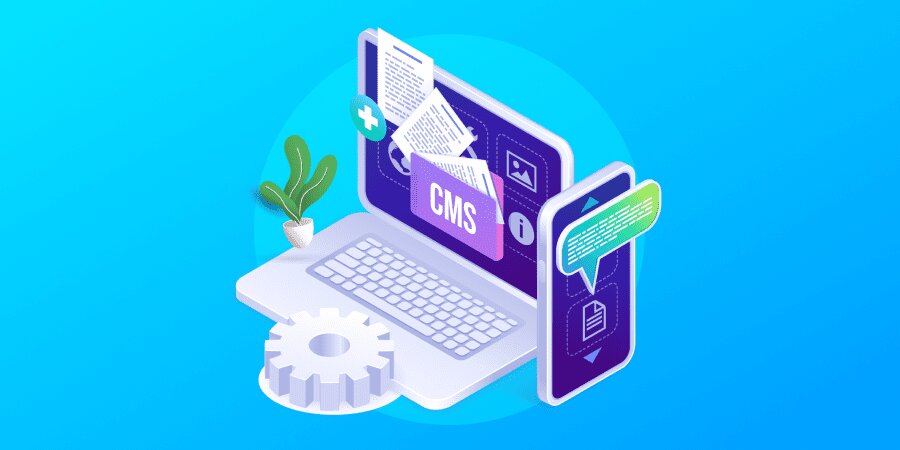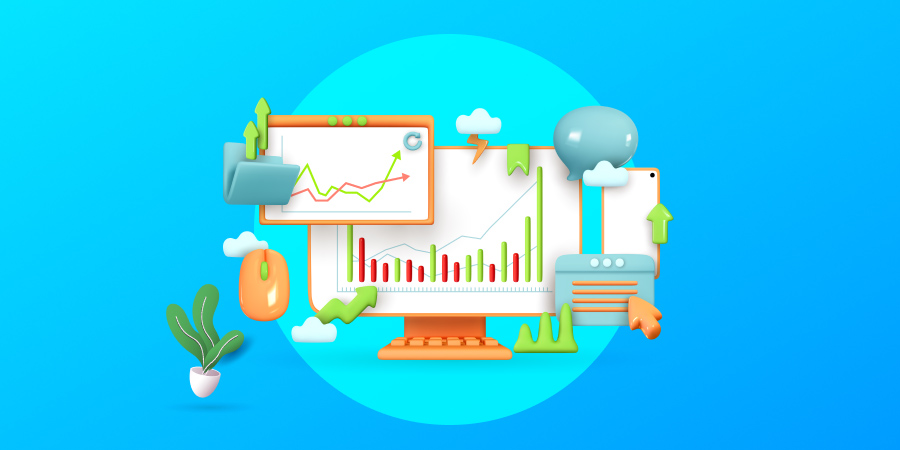If you’re in the realm of web design and development, you may be familiar with the acronym “CMS.”
But what is CMS in web design, exactly? And how does it work?
We’ll answer these questions and more, in this 101 guide to content management systems in web design and development.
Digital Silk builds custom websites. Request A Quote
What Does CMS Stand For In Web Design?
CMS stands for content management system — a software platform that allows users to create, edit, store and publish digital content on a website, through a user-friendly interface.
In simpler terms, a CMS is a tool that allows you to create website content and store images without any technical skills or website development experience.
A typical CMS usually allows multiple users to collaborate on a project.
Besides website content, there are also content management systems designed to perform other functions, like managing documents.
Types Of CMS In Web Design & Development
While most content management systems allow users to create, modify and manage content, not all systems were designed with the same purpose.
There are several different types of CMS in web design and development:
Speak with our experts. Schedule A Consultation
1. Enterprise Content Management (ECM)
An enterprise content management (ECM) system is a platform that enables the management of an organization’s structured and unstructured data. This means that it handles document management, as well as files such as web page content, images, video and multi-media files.
An ECM system is a complex automated system that includes software, along with a set of strategies and tools that help store, organize and deliver content to the right audiences.
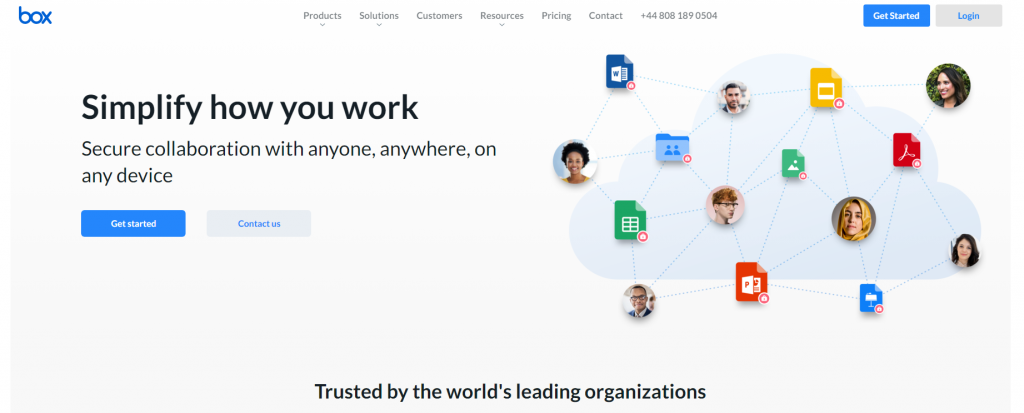
[Source: Box]
2. Document Management System (DMS)
A document management system (DMS) is a less refined and advanced version of an ECMS — it manages how simpler documents are created, reviewed and collaborated on. It typically manages documents in traditional formats including PDF, Word and Excel.
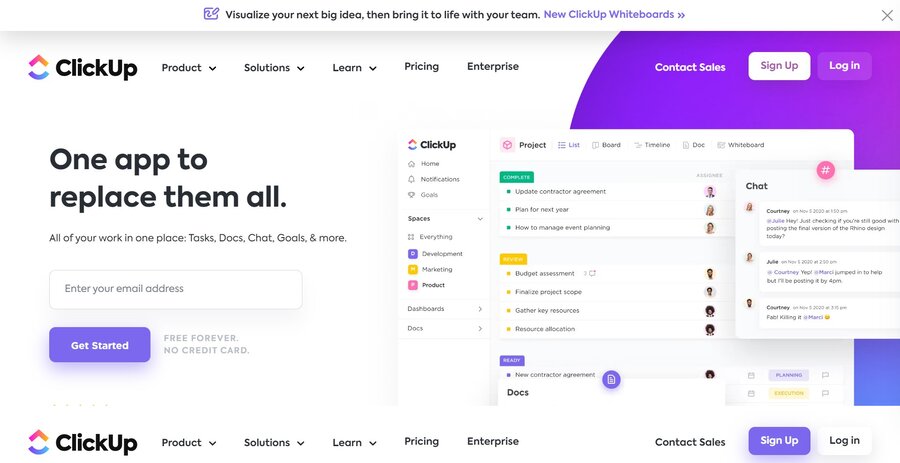
[Source: ClickUp]
3. Web Content Management System (WCMS)
A web content management system (WCMS) is similar to an ECM, but created specifically for web content. A WCMS features a publishing tool and allows users to manage website information by creating and maintaining content, such as product pages, without any knowledge of programming languages.
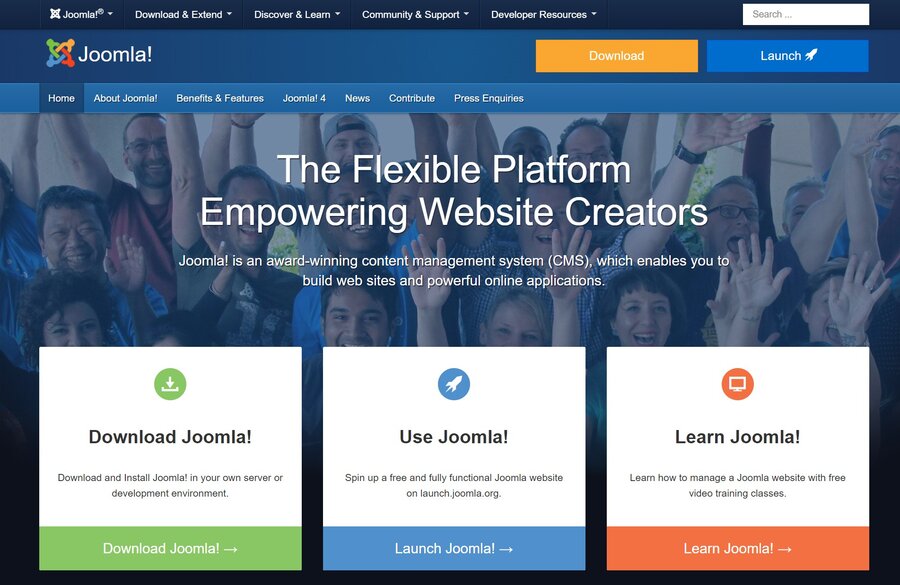
[Source: Joomla]
4. Component Content Management System (CCMS)
A component content management system (CCMS) allows users to manage digital content on a component level. A component is a piece of content such as a word, paragraph, video or image, that is independent.
The difference between a regular CMS and a CCMS is that instead of managing content one full page at a time, a CCMS lets you manage components of content.
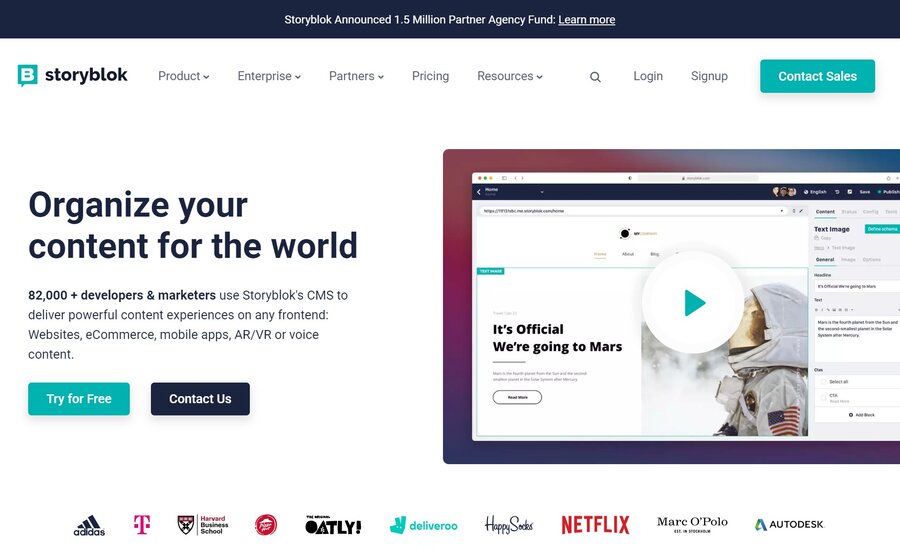
[Source: Storyblok]
How Does A CMS Work?
As mentioned, a CMS is a software application that allows you to create and modify digital content. This software application has two components:
A content management application (CMA): An interface that allows content creators to create, modify, publish or remove content from a website without the need for coding skills
A content delivery application (CDA): The backend of a website that facilitates content management and delivery by taking the content a user creates and displaying it to website visitors
Here’s how to get started with a CMS:
1. Choose A CMS
Research your CMS options and weigh the deliverables. From an easy-to-use interface to advanced search capabilities and multilanguage support, different platforms offer different benefits. The right CMS is the one that aligns with your website’s needs and requirements.
2. Pick A Domain Name
Choose a domain name for your website. You can browse available names on GoDaddy and purchase a domain name for as low as $1. Ensure the name you choose is easy to pronounce, memorable and on-brand.
3. Purchase Hosting
Choose a hosting provider based on the features offered and a pricing plan that aligns with your budget. Some of the most popular hosting providers include Bluehost and HostGator.
4. Install The CMS
The next step is to install the CMS. This step may vary depending on the platform you choose, but it is typically simple and quick to set up, as most CMS have pre-defined steps for installation.
5. Install Plugins
Next, you need to install plugins to extend the functionality of your website, such as SEO tools or a plugin to create forms. You can choose between free and paid plugins, depending on your goals.
6. Customize Your Website
If you want a unique website that represents your brand, customize your site design by choosing among available free and paid themes, or hire a web designer to create a custom theme for you.
7. Upload Content
The final step is to upload your content. Typically, templates will have pre-designed content pages as drafts that you can edit and update with your info. You can also create your custom pages and create your own content types.
Simply fill out the SEO fields and hit publish!
Benefits Of Using A CMS
A content management system offers the following key benefits:
1. Requires No Coding Skills
One of the biggest benefits of a CMS is that anyone can use it, as it doesn’t require coding skills. With a CMS, you can build a website page by page, even if you’re not skilled in web design and web development. You can easily create pages, and content, customize the design and more.
2. Facilitates Easy Collaboration
A CMS allows multiple users to use the system simultaneously and collaborate on projects. This means that one user could be working on creating or updating content, while a developer could be working on security protocols at the same time.
3. Offers Built-In Features
Another benefit of a CMS is that it comes with a wide variety of built-in features that you can add to your website to extend its functionality and optimize the content.
For example, you can install SEO plugins to ensure your website content is fully optimized for search engines. If you’re using WordPress, you can install All In One SEO or SEOPress.
4. Allows Access To Multiple Users
A CMS allows you to create accounts for as many users as you need. Simply create a separate account for each user, and they can log into the CMS and manage or update content.
5. Enables Content Scheduling
When you use a CMS, you can schedule content easily without any technical skills. With a few clicks, you can schedule anything from blog posts to landing pages and emails to be published or sent at certain times.
6. Provides Instant Updates
You can easily update your CMS website by yourself, without the help of a developer. You can make changes on your own, from replacing an image to redesigning the website. Just log into your account, go to your dashboard and edit/update any web page.
Our experts can help. Set Up A Consultation
Top 5 CMS Platforms
When it comes to CMS platforms, there are numerous options. While the basics are similar, each platform has certain advantages, depending on what you’re looking for.
Here’s a breakdown of the most popular CMS platforms:
1. WordPress
Without a doubt, WordPress is the most popular website builder and CMS platform out there for any type of website or business. We would know; we specialize in custom WordPress sites.
Building a website is free on WordPress, but you need to purchase hosting and a custom domain. Over 40% of websites across the globe are built in WordPress, including well-known brands such as The New York Times.
Building a site using WordPress is quick and easy, and you can customize it using ready-made themes and plugins from the WordPress directory. No need for a wireframe as you can set up your website within minutes. Posting or updating content or creating pages is very easy, as the CMS is simple and user-friendly.
Pros:
- Free website builder
- Affordable hosting
- User-friendly
- SEO friendly
- Large number of plugins available
Cons:
- You need to install multiple plugins for additional features
- Frequent updates can disrupt the operation
Pricing: WordPress offers a free plan and a range of paid plans, including Personal (starting at $4/month), Premium ($8/month), Business ($25/month) and eCommerce ($45/month).
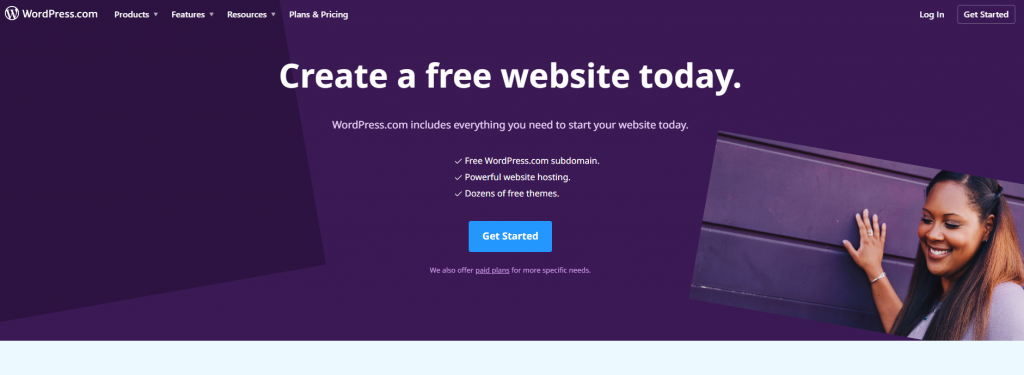
2. Shopify
Close to four million websites are built on Shopify, a leading platform in the eCommerce industry.
The platform’s CMS is intuitive and easy to use, with lots of built-in features for everything your e-store could possibly need. Our Shopify experts recommend this platform to medium-sized or fast-growing businesses.
There are multiple plugins to add if you want to customize your website, such as Plug In SEO, which helps you optimize your store for search engines, or Wishlists Plus, which allows users to pick their favorite products and bookmark them.
You can also extend the platform’s functionality by integrating third-party apps such as Mailchimp for adding to or updating your subscribers list.
Among the biggest brands in the world that use Shopify is Red Bull.
Pros:
- Easy to use
- Customizable
- Hosting is included
- SEO tools are available
- Great customer service and 24/7 support via chat, email and Shopify Academy
Cons:
- Content editor isn’t as flexible as other website builders
- Shopify charges transaction fees and subscription fees for the apps you’re using
Pricing: The Basic plan starts at $29/month. There’s also a Shopify plan starting at $79/month and Advanced plan starting at $299/month.
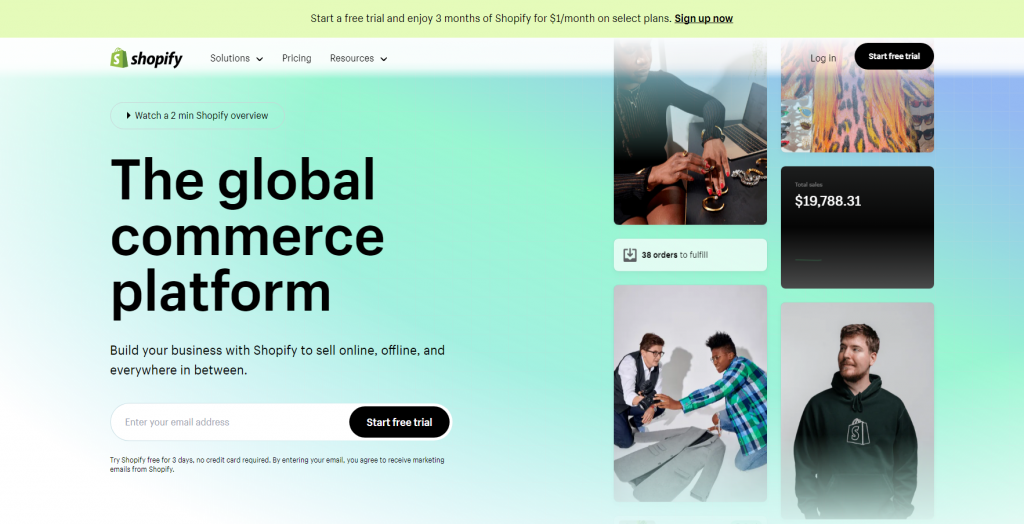
3. Drupal
Drupal is highly praised for its reliability and performance, although it is not as simple as WordPress.
Drupal comes with thousands of free themes, modules and advanced security features that allow you to customize your website. The open-source platform does require some web development experience, so it is ideal for large businesses and government agencies that require large databases and are content-heavy.
For example, the official Australian Government uses Drupal, and so does the electronic car brand Tesla.
Pros:
- Open-source and free code
- Easy to create your own content (web forms, blog posts, pages)
- High security
- Excellent performance that supports high traffic
- Easy to scale
Cons:
- Requires basic coding skills
- Advanced interface, created for web professionals
Pricing: Open-source code is free on Drupal, so you only need to pay for hosting.
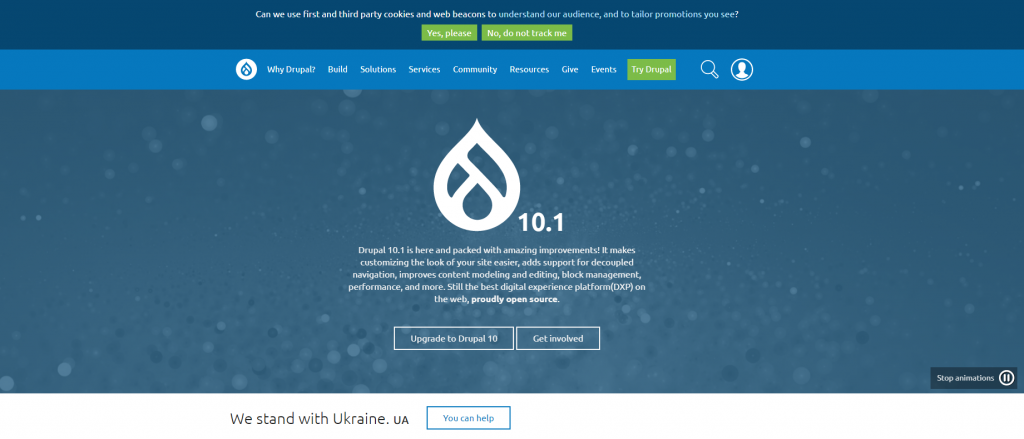
4. Magento
Magento, now known as Adobe Commerce, is another CMS leader in the eCommerce industry, with more than 250,000 companies worldwide using the platform. Our certified Magento developers recommend this solution to enterprise-level businesses.
Magento makes content management easy. The Page Builder allows you to simply choose a page layout and add your content. Some pages such as Home and About Us are already there by default.
The flexible, open-source platform allows you to modify the source code to fit your website needs and requirements, but it does require a bit of a learning curve. Typically, this CMS is reserved for a certified Magento development agency, which can take advantage of the numerous extensions it offers.
One of the major brands that use Magento is Coca-Cola.
Pros:
- Plenty of features available
- Open-source platform can be modified to your requirements
- Scalable
- A large community of users
- Regular security updates
Cons:
- The platform has a steep learning curve
- Can cause your website to slow down if you don’t have a dedicated server
Pricing: Magento is available in several pricing options. The open-source Magento Community Edition is free, so you pay for hosting only. The Enterprise Edition is proprietary, so you pay an annual fee, starting at $22,000/year.
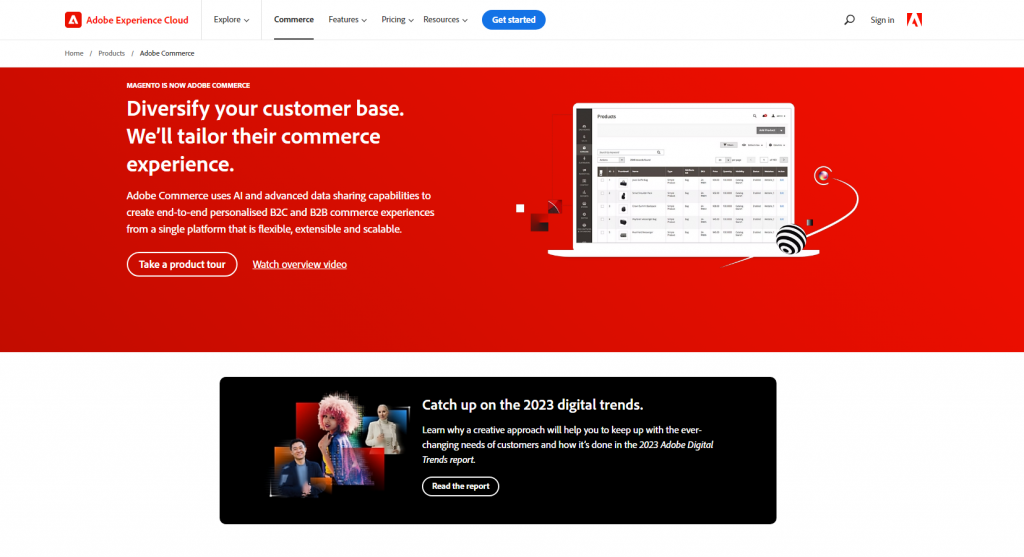
5. Joomla
Like WordPress, creating a website on Joomla is free, but you need to pay for hosting and purchase a domain name.
The platform is simple and easy to use. It features over 10,000 free extensions and templates, so you can customize your website. It allows multi-user permissions as well, so multiple users can work in the CMS simultaneously.
Over 2 million websites across the globe use Joomla, including the Swedish furniture giant Ikea.
Pros:
- Free open-source code/no licensing fees
- Easy to install
- SEO friendly
- Wide range of extensions available
- Premium templates available
- Active community
Cons:
- Creating professional web design requires a professional developer
- Limitations on customization
Pricing: Joomla offers free open-source code, so you only need to pay for hosting.
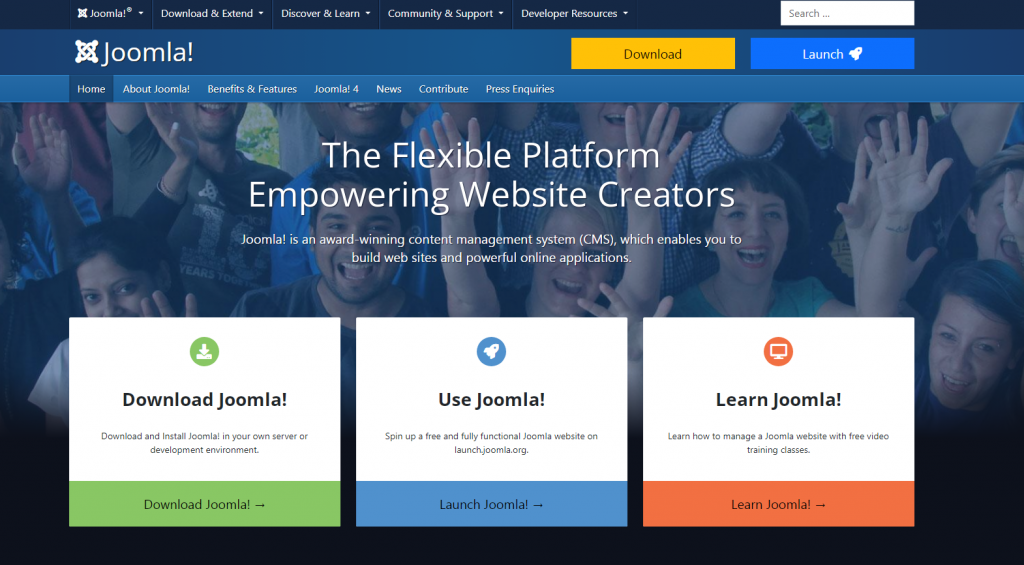
Our Web Design And Development Services
Our experts provide custom website design and development services and build websites on all of the leading CMS platforms, including WordPress, Shopify, Magento, Drupal, and more.
From startups to large enterprises, our experts have designed and developed websites in different locations including developing branding strategies in New York City, Miami, California, and other locations various across industries.
Whether you’re looking for a simple, user-friendly CMS such as WordPress or a more complex platform like Drupal, our specialists have the expertise and experience to customize your website to meet your needs and requirements.
Check out some of our recent website projects!
Along with web design and development, we are a full-service agency that offers consulting, digital marketing services, branding services, SEO, app development and more.
Whether you run a startup and you’re looking to establish a digital presence, or you’re in need of a new website or rebrand, our expert team will exceed your expectations in design, development and beyond.
"*" indicates required fields

